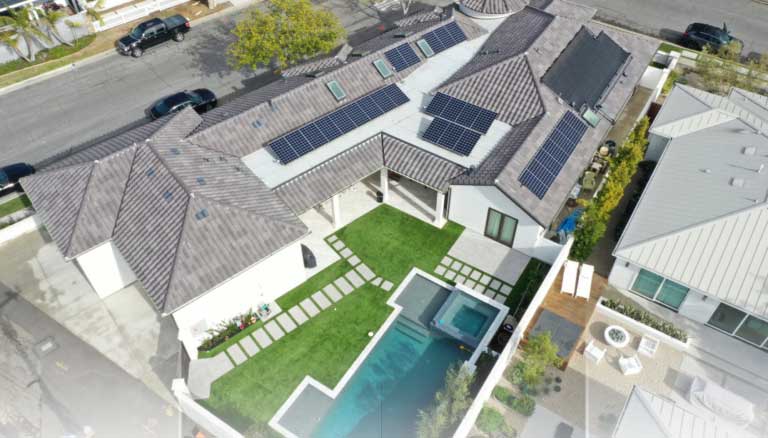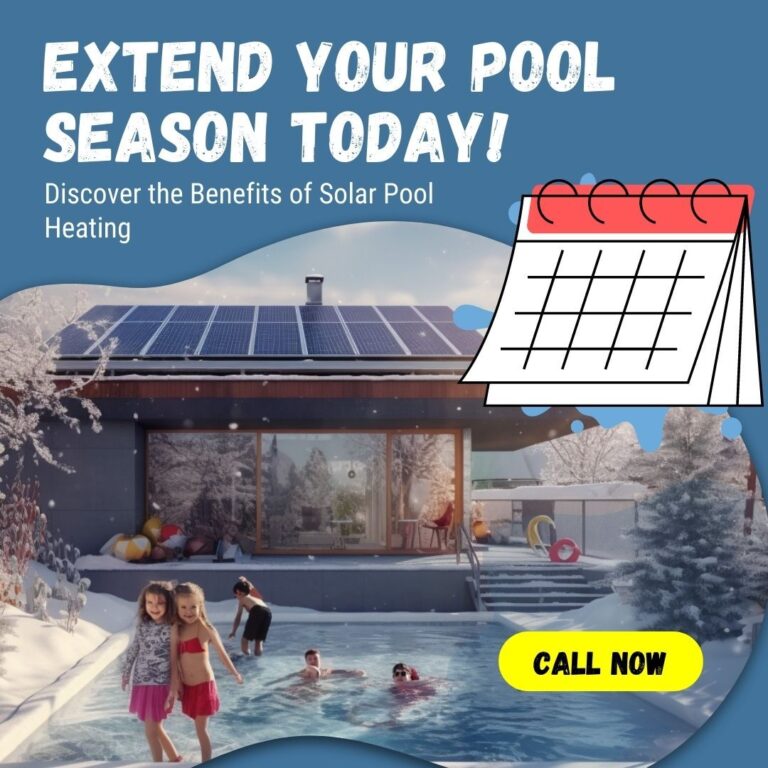- System design and financial analysis: Every home and business owner is unique. So are their energy needs and solar design considerations. The more information that a home/business owner can provide a Suntrek team member, the more thorough analysis and expectations can be provided.
- NEEDS LIST
- Square footage of building – The home square footage can be helpful when designing for a new home where historical data is not possible to reference. When considering home square footage as an indicator for energy consumption, it’s also important to consider the climate zone the home is in and individual lifestyle choices (AC usage, Electric Vehicle, Swimming pool, etc).
- Copy of a utility bill – A copy of one utility bill gives a broad overview of energy consumption over the past 12 months. On most utility bills, a chart shows changes in energy consumption over the past 12 months. An optimally designed system will be built around your historical energy consumption. The utility bill will also tell Suntrek your utility rate structure. This is critical information for accurate financial modeling.
- Interval Data/Green Button Data – The most accurate proposal will be provided using interval data. Interval data can be downloaded from your respective utility’s websites OR Suntrek may be able to access the data through 3rd party authorization. Interval data breaks down your energy consumption habits into 15–60-minute intervals throughout the entire year. This allows us to understand WHEN you consume your power. Since most utility companies have shifted to rates that are based on the time of energy consumption (time of use), the time of day that you consume can have a large impact on the economics of going solar.
- Lifestyle Changes – In most cases, we can design a solar system based on historical energy data. However, this also prompts us to question whether the past energy consumption is representative of what the future will hold. Will you increase your AC usage? Are you going to buy and electric vehicle? What about two? It’s important to give these future lifestyle changes consideration during the design phase so that appropriate expectations are set for a solar system’s contribution to your energy bill.
- NEEDS LIST
- Site assessment and analysis: The solar industry has been overtaken by solar reps and companies that propose a solar energy solution without ever visiting the site. While this can serve as an effective preliminary “snapshot” of the opportunity to go solar, careful consideration should be given to each project’s unique site variables.
- Roof: if there is one thing that is most important to the installation of a solar energy system, it’s your roof! Roof integrity is paramount when installing a solar energy system that can last a lifetime. The last thing anyone wants is for a solar system to be installed on a roof that may leak soon.
- How old is the roof? Some roofs are built to last 40+ years. Others need re-surfacing every 10-15 years. Some roofs can be walked on with ease, while others need careful consideration and a protocol for how roof damage will be handled.
- Is my roof type safe for solar? The majority of roof types are solar friendly. There are a select few that should be given the attention they deserve: Spanish (Clay tile), Slate tile, light weight concrete tile, and flat roof types are amongst the few where special attachments or roof modifications may be necessary
- Solar Equipment: A solar energy system consists of more than just solar panels on the roof. Electrical conduit must be run from each solar array location to your main electrical panel location. Adjacent to your main electrical panel, other equipment will need to be installed (Inverter, disconnect switch, batteries, etc). Be sure to consult your Suntrek Rep about where this equipment will be located. Can the electrical conduit and equipment be installed where you want it? Sometimes it can be. Other times, the building code will prohibit your requests from being accommodated. Its best to get in front of this topic so that you have appropriate expectations for the execution of your project
- Roof: if there is one thing that is most important to the installation of a solar energy system, it’s your roof! Roof integrity is paramount when installing a solar energy system that can last a lifetime. The last thing anyone wants is for a solar system to be installed on a roof that may leak soon.
- Solar Products: The industry is filled with different solar solutions. Suntrek installs all of them and will make recommendations to you based on your unique project’s variables and individual objectives.
- Panels: Solar panel technology has evolved and improved rapidly over the past decade. Today, solar products can be compared based on the following metrics:
- Panel Efficiency: How much of the sunlight that hits the panel is converted into usable energy? Most products range from 17%-23%
- Panel Wattage: How many watts does one panel produce under standard testing parameters?
- Panel Dimensions: If one panel is 20 sq ft and produces 400 Watts, and another panel is 25 sq ft and produces 450 Watts, which panel is preferred? The 400-watt panel will give you more “bang” for your buck for each square inch of space it occupies. Many companies are playing off the consumer’s understanding that “a higher wattage panel must be better right?” Not necessarily, if a company makes a large solar panel, it will have a higher wattage rating. A bigger panel may work on a large open roof space (commercial). However, on a residential roof, there can be roof obstacles that prohibit maximization of solar in each space.
- Panel Manufacturer: Who makes the product? How long have they been making solar panels? Where is it made? Regardless of your stance on where you want to buy products from (USA, Europe, China, etc) most would agree that you want to buy a product that has been manufactured long enough for the market to assess the product longevity and reliability. With so many new players coming to market, Suntrek is sure to vet the various manufacturers to ensure you are purchasing quality product.
- Panel Warranty: A warranty is only as good as the company standing behind it. For this reason, its logical to pick a product with a bankable financial backing. Solar warranties are broken down as follows:
- Performance Warranty: EVERY manufacturer in the marketplace today offers at least a 25-year warranty. The fine print of those warranty documents outline what this “limited” warranty entails. The “best in class” products in the solar industry will offer a 25-year warranty that states that the solar panels will produce no less than 92% of original output 25 years from the day of installation. While the “best value” performance warranty states no less than 80% of original output 25 years from day of installation. Is this difference worth paying a premium for?
- Product Warranty: Product warranties can vary from 10 years up to 40 years! This difference will have a direct correlation to the price and quality of the product.
- Labor Warranty: Only a handful of manufacturers offer a 25-year labor warranty. Most low-cost products come with NO labor warranty.
- Inverters: Your solar system is only as good as the inverter that converts that solar energy (DC power) generated by the panels into safe, usable energy (AC POWER) in your home. While there are many manufacturers in the market, only a handful are used by the entire industry (Enphase and SolarEdge to name a few). Inverter information on the internet can be outdated. What is important and relevant today (regardless of manufacturer) is:
- How do I monitor my system’s performance?
- How resistant to shade or other negative site variable is my system?
- How hard will it be to add more solar panels to my system in the future?
- How would a battery be integrated into my system in the future?
- Batteries: The battery market is growing and evolving rapidly. If you attend a solar trade show, you will see dozens of new battery manufacturers coming to market in hopes of riding the wave of electrification and EV technology. Battery or Energy Storage Systems (ESS) have been brought to the forefront of the solar industry for a few reasons. Most solar systems installed in the past and today are “Grid Tied” solar systems. This means that your solar system will deliver power to your home when there is demand for electricity but can also send energy back to the utility grid when there is no demand for power. Historically, this has been a favorable “relationship” for most solar system owners with Net Metering Agreements in place with the respective utility providers which compensates home/business owners for excess power production. The limitation, however, is that if there is a grid outage, your solar system does not deliver power into the home. An ESS can solve this problem by giving system owners the ability to have their own “microgrid”. Sending excess solar power to the battery for use if the power is out. This battery can also be used to strategically “discharge” power while the utility grid is active and exercise utility rate “arbitrage”. That’s a fancy way of saying you can store power in your battery when power is less expensive and discharge power from the battery when power is most expensive. This concept has been brought on by mandatory adoption of “time-of-use” utility rates. Of all the “system” components to due diligence on, batteries are at the top of the list. If you are going to invest a large sum of money in a battery system, it is crucial that the system has seamless communications, reliability and SAFETY. These traits are dictated by the following:
- Chemistry: Battery chemistry dictates the size, longevity, durability, functionality and safety of a battery. The most common battery types being used on grid tied solar energy systems are Lithium Ion (LI) or Lithium Iron Phosphate (LFP). LI batteries are ENERGY DENSE which means that the batteries are typically low profile and streamlined in appearance. However, they typically have a limited shelf life and have greater risks of thermal runaway (Fire!). Conversely, LFP batteries may have a larger footprint but have proven to be more stable, durable and SAFER. LI batteries are generally less expensive than LFP batteries.
- Communication and Compatibility: If the power goes out, you are going to want the transition from GRID to BATTERY SYSTEM to be seamless and without interruption. This is only possible with great system communication. This cannot be done without compatibility of components. Whenever possible, Suntrek advocates for installing battery systems made by the same manufacturer of inverter.
- Panels: Solar panel technology has evolved and improved rapidly over the past decade. Today, solar products can be compared based on the following metrics:
- If you’ve made it this far, you’ve come to the most important part. Who is the contractor responsible for presenting all the above in a clear, concise and helpful way? Who will you call if you have a question or problem? What if the product you install is defective? Who is your support?
Suntrek has been designing, installing, and servicing solar energy systems for over 30 years. Whether you install a “best in class” solar product or something that is “best value”, everyone deserves a reliable partner they can turn to for support. Beyond deciding which product is best for you, what really matters is the support you will get from your installer. Not just the day you sign up or the day of installation, but over the life of your solar system.




